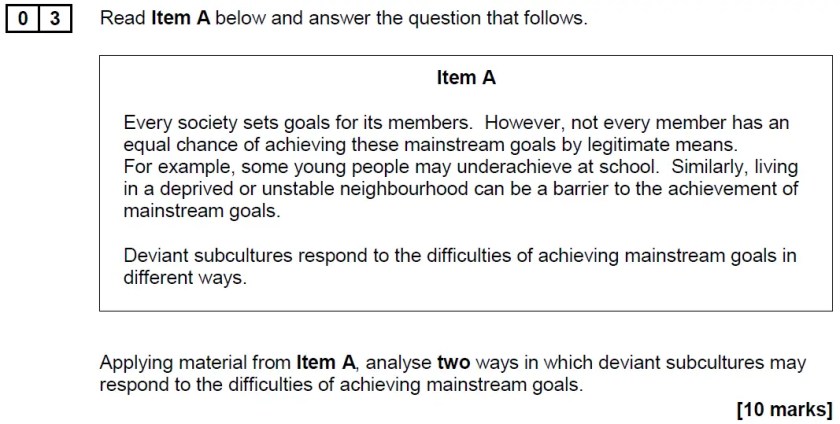Read Item M below and answer the question that follows.
Applying material from Item M, analyse two reasons why the media often portray minority ethnic groups negatively. [10 marks]
Commentary on the question
A non-standard question about representations, focusing on ‘why’ rather than on ‘how’ one group is represented. There are two clear hooks in the item – the first about power and the second just about difference, suggesting that candidates make two points – one from a broadly hegemonic perspective, the other focussing on the public/ pluralism. Remember that you can pick up marks for evaluating in this type of 10 mark ‘with item’ question.
Before reading the answer you might like to review the material on ethnicity and representation, and some of the theories of ownership and control such as Pluralism, Instrumental Marxism and Hegemonic Marxism, all of which can be applied to this question.
Answer
The first reason why minority groups are represented negatively is because they have different values/ beliefs and practices from ‘mainstream’ society and are perceived by the wider public as not being fully integrated into the ‘British way of life’. The public at large is thus prejudiced against ethnic minorities, and anything which seems to threaten British identity.
By focusing on negative representations of minorities – Islamic terrorists, benefit claiming immigrants, Romanian beggars, for example, newspapers such as The Sun and the Daily Mail can sell more newspapers and make more profit – it is easier to do this by perpetuating stereotypes compared to running stories which challenge such negative representations.
It is relatively easy for papers to find stories about ethnic minorities which have many news values because some ethnic minorities do engage in activities which are ‘shocking’, and it’s maybe understandable why newspapers may choose not to publish stories in which minority groups are just ‘being British’ – because there’s nothing ‘newsworthy’ about such stories.
This theory fits in with the pluralist view – newspapers aren’t deliberately prejudiced against ethnic minorities, they just run stories which reflect public bias to increase profits.
Hegemonic Marxists would argue that ethnic minority groups are represented negatively because they are underrepresented in positions of power – both in society/ government and within the media itself.
According to Stuart Hall, ethnic minorities have been used as scapegoats for society’s larger economic problems – knife crime by black youths in London in the late 1970s was turned into a moral panic by negative reporting in the press, even though the rate of that crime was declining.
In a similar way gang crime today is largely constructed in the media as a black problem, rather than a multi-ethnic phenomenon.
A further reason why such negative representations are so common could be the lack of black voices among media professionals, meaning the white majority just go along with the racial victimization of young black youth by the government and police.
However, such negative representations may be changing in the age of New Media, which gives more power to ethnic minorities to challenge stereotypes and power inequalities in society more directly.



 If you like this sort of thing, then you might like my Theory and Methods Revision Bundle – specifically designed to get students through the theory and methods sections of A level sociology papers 1 and 3.
If you like this sort of thing, then you might like my Theory and Methods Revision Bundle – specifically designed to get students through the theory and methods sections of A level sociology papers 1 and 3.










